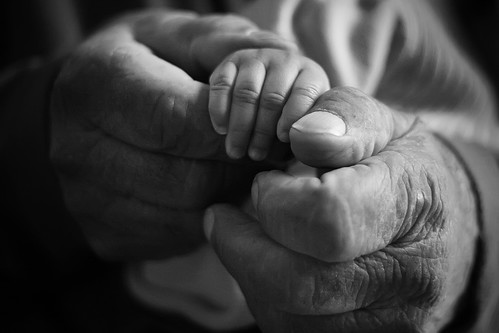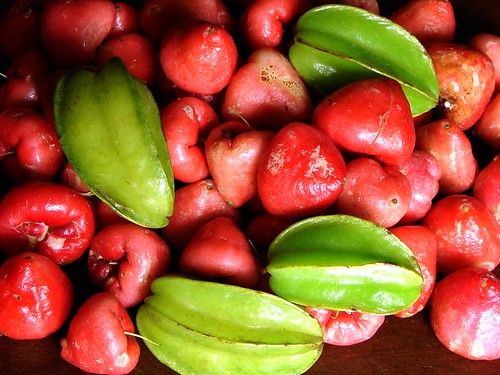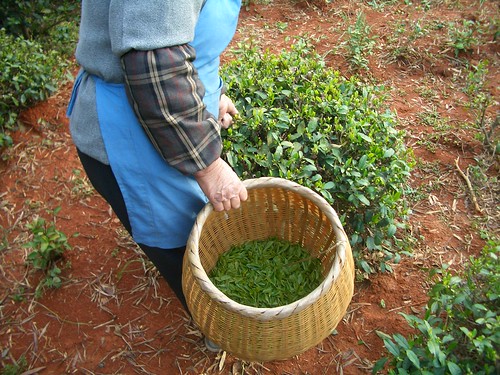Antioxidants and Intermittent Fasting – Good For Longevity?
Is it possible to live longer by combining the benefits of intermittent fasting (IF) and plant polyphenols? A new paper claims that taking polyphenol antioxidants during dietary restriction increases the lifespan of mice more than dietary restriction alone. The antioxidants used in the study were blueberry, pomegranate and green tea extracts.
The subject of the paper – "Potentiation of dietary restriction-induced lifespan extension by polyphenols" – is certainly enough grab the attention of anyone interested in life extension. The abstract seems promising too (link). Here's a quote:
Dietary restriction (DR) extends lifespan across multiple species including mouse. Antioxidant plant extracts rich in polyphenols have also been shown to increase lifespan. We hypothesized that polyphenols might potentiate DR-induced lifespan extension. [––] Polyphenol compounds may potentiate IF-induced longevity by minimizing specific components of IF-induced cell stress.
Let's look at these claims in more detail. First off, it's not clear from the abstract what exactly the authors mean by "dietary restriction". The full paper, however, reveals that they use the term to describe pretty much any kind of diet where access to food is limited, including traditional calorie restriction and intermittent fasting.
The longevity confusion
The problem with that opening sentence is that dietary restriction extends lifespan across multiple species only when it equals calorie restriction. That is, you can make a mouse live longer by only feeding every other day, as long as it results in less calories consumed. This is an important distinction, because many people – including longevity scientists – keep propagating the myth that intermittent fasting has the same benefits as calorie restriction. It doesn't. The reason that IF prolongs lifespan in some species is because the animals fail to compensate for the missed calories on their feeding days.
The next sentence is just as problematic. Yes, plant antioxidants have been shown to increase lifespan, but the question is, compared to what? So far, no one has succeeded in exceeding the known maximum lifespan of mice by feeding them antioxidants. Instead, what we see in many studies is that the antioxidant group lives longer than the control group.
The problem is that almost always, neither group lives very long. Poor diets, poor animal husbandry, poor environment – all play a role in how long the animals live. So, in essence, the antioxidants merely make the unhealthy mice a bit healthier. But this is like making a human live 70 years instead of 60 years by giving them some veggies with his daily bread and then claiming that "vegetables extend human lifespan".
Comparing lifespans
That said, there are some interesting figures in the full paper. The graph below shows the survival rates of the three groups; one fed the control diet, the second fed the same diet but only every other day, and the third fed a diet supplemented with polyphenols every other day:
There's a big drop in the survival rate of the control group around 22 months. For the IF groups, the survival curves look a lot better. So how does this compare to the average lifespan of similar mice kept in good laboratory conditions? Here's a graph of age ranges and survivorship of C57BL7/6J mice (the same strain used in this study):
This survival curve is based on a cohort of 150 male and 150 female mice. As you can see, at 28 months half of the mice are still alive. That's about 850 days, which is a pretty normal figure for mean lifespan of this strain of mice in the literature.
Once again, in the antioxidant study the control group dies earlier than is normal. For some reason, half of the mice are dead at 22 months instead of 28 months. One possible reason is the use of a high-fat diet to "mimic the effects of a Western diet", as the authors put it. This seems like a strange idea to me, because a typical Western diet is no more a high-fat diet than it is a high-carbohydrate diet. Furthermore, plenty of humans (myself included) seem to do quite well on a high-fat diet, whereas with mice it's somewhat different.
The survival curve of the IF mice in the first graph is slightly better than that of the normal-fed mice in the second graph. But that is hardly a surprise, given that both the IF group and the IF + antioxidant group had lower body weights than the control group. In other words, the intermittent fasting once again made the mice eat less than the control group, which in turn resulted in a slightly longer lifespan. It's good to keep in mind, however, that with just 10% calorie restriction longer lifespans have been reported in other studies, so the result is not too impressive.
Conclusion
Perhaps the most interesting result is that the IF + antioxidant group lived slightly longer than the IF group. There's no concensus as to whether it's a good idea to combine CR or IF with antioxidants. It may be that plant polyphenols are essential for optimal nutrition and good for activating sirtuins (which play at least some role in longevity), but there is also some evidence suggests that taking antioxidants may interfere with hormesis and thus diminish the effects of CR.
In this study, the antioxidants had a beneficial effect. While the IF diet by itself activated pro-inflammatory pathways, adding plant polyphenols to the diet blocked this effect. The authors identified 20 gene sets that were down-regulated by the addition of polyphenols, most of them related to immune response, inflammation, cell differentation and tumorigenesis.
This suggests that if you're doing intermittent fasting, adding some blueberries, pomegranates and green tea to your diet may not be such a bad idea. Note, however, than the mice did not have access to polyphenols during their fasting days, so this study tells us nothing about taking antioxidants during fasting. It also doesn't say much about how polyphenols affect regular calorie restriction without IF in humans.
For more information on intermittent fasting and longevity, see these posts:
Lithium in Drinking Water May Lead to Longer Life
Does Intermittent Fasting Increase Lifespan?
Alternate-Day Feeding and Weight Loss: Is It the Calories Or the Fasting?
Slowing Down Aging with Intermittent Protein Restriction




















